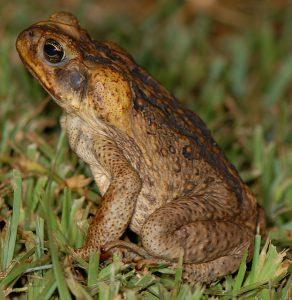Exposure to glyphosate makes cane toad tadpoles even more toxic
 Photo credit: Sam Fraser-Smith
Photo credit: Sam Fraser-Smith
The cane toad is a large poisonous toad considered to be an invasive species in Australia, Hawaii and many other locations across the globe. Both the adult and tadpole of the cane toad produce defensive chemicals called bufadienolides that are toxic when ingested. Cane toads are responsible for the death of both wild and domesticated animals that eat them, making them a noxious pest and a conservation threat to native species that eat them. A new study published in the Proceedings of the Royal Society B has now found that exposure to pesticides with the active ingredient glyphosate, the main chemical in Roundup and one of the most commonly used herbicide worldwide, makes cane toad larvae even more toxic. Cane toad larvae were exposed to glyphosate both in the laboratory and outdoors. Tadpoles exposed to a higher level of (4mg a.e./L) for nine days in the lab and tadpoles exposed to both the higher and lower concentration (2mg a.e./L) of glyphosate for three weeks outside produced higher levels of bufadienolide. “These results show that pesticide exposure can have unexpected effects on non-target organisms, with potential consequences for the conservation management of toxin-producing species and their predators,” the authors wrote.


